#david george hogarth
Explore tagged Tumblr posts
Text



Just for funsies, I've recently tried to wrap my mind around this tiny mistake in Act Two Scene One in the play "Ross. A character portrait" by Terence Rattigan.
For context, Lawrence has just arrived at Allenby's GHQ and stops an exiting Storrs to tell him about one of the newest archaeological discoveries by Freddie Strong (I failed at identifying him with a real life person), that is an alabastron (perfume jar) from the Twentieth Dinasty with strong Minoan influences. [As an aside, this is factually incorrect, since the Egyptian Twentieth Dinasty goes from 1189 BC to 1077 BC, while Minoans lasted from around 3100 BC to approximately 1400 BC, but it isn't the main topic here]
Allenby takes a sudden interest in the subject and says he's been reading Arthur Evans' book "The Palace of Minos".
The historically accurate thing here is that Allenby loved reading about a variety of topics (unlike other generals), the inaccurate one is that the first volume of "The Palace of Minos" was published in 1921, so it can't fit a scene set about in 1917 or at best in 1918.
At this point, we can remember that this scene is set during a dream-like sequence, where Lawrence is remembering his past life in Arabia, so this mistake is accounted for by the fact that dreams usually don't have the accuracy and correctness of real life.
Since Lawrence joined the RAF in 1922 (and the play is set in 1923), it could make sense that he was reading a book published the year before.
However, the topic of the book it's a bit strange for Lawrence. As an archaeologist, he dealt mainly with Crusade era castles and Karkemish, that is Middle Age and Bronze Age sites in the Near East. "The Palace of Minos" deals with every finding at the Minoan Palace of Knossos in Crete that isn't an inscription of any sort (the Aegean Bronze Age inscriptions were dealt with in his 1908 book "Scripta Minoa I").
As to my knowledge, there is no evidence that Lawrence has ever dealt with any Minoan finding, since he clearly had a different area of expertise, but I'll be happy to be disproved.
However, there's a teeny tiny link between Lawrence and someone expert on Minoan things, and that person is David George Hogarth. He was a British archaeologist that did some excavations in Crete and was affiliated with Arthur Evans, the scholar of Aegean Bronze Age scripts and excavator at the Palace of Knossos.
Moreover, it was Hogarth that hand picked him to join his excavations at Karkemish. And we know that Lawrence met Dahoum (the S. A. of the dedicatory poem at the beginning of "The Seven Pillars of Wisdom") at Karkemish. So, maybe we have to say thank you to Hogarth for indirectly bringing to Lawrence his personal motivation to fight for the Arab liberation.
During World War One, Hogarth was lieutenant commander in the Royal Naval Volunteer Reserve and worked at the Arab Bureau together with Lawrence, so in the end everything is connected.

Bonus pic: from left to right, T. E. Lawrence, D. G. Hogarth and Lt. Col. Dawnay at the Arab Bureau, Cairo, May 1918.
#sorry for the ramble#I just remembered the only thing I share with Lawrence is a degree in Classics#t e lawrence#thomas edward lawrence#lawrence of arabia#david george hogarth#loaedit#archaeology#ww1#ross a character portrait#ross by terence rattigan#allenby#history
13 notes
·
View notes
Text
100+ Famous Modern Art Artists of All Time

2/8/2024 ♦ Framed Poster Print ♦ Canvas Print ♦ Metal Print ♦ Acrylic Print ♦ Wood Prints 🌐 Worldwide shipping
#alberto giacometti#john constable#jacques louis david#giorgione#arshile gorky#pieter bruegel#simone martini#franz marc#theodore géricault#william hogarth#camille corot#georges braque#berthe morisot#james whistler#Frederic Edwin Church#georges de la tour#Élisabeth Louise Vigée Le Brun#cimabue#dante gabriel rossetti
4 notes
·
View notes
Text







On August 6th 1796,the Scottish artist David Allan died, he was known as The Scottish Hogarth.
Allan was born in what once was the busy port of Alloa on the river Forth where his father, also David, was the Shoremaster in charge of the harbour.
David had a rather unfortunate childhood; he was born prematurely and his mother died shortly after his birth, he survived two accidents in his early years which threatened his life. He displayed an early talent for drawing which led to his expulsion from the parish school when he drew a caricature of the dominie in the act of caning unruly pupils, dominie is an old Scottish name for a schoolmaster.
In 1753, Robert Foulis, a publisher in Glasgow, founded the Academy of Art and Design which was granted a room in Glasgow University. The Academy was essentially a charitable institution supported by local wealthy merchants with encouragement from the aristocracy including the Duke of Argyle and Lord Cathcart. In 1755, two years after its foundation it had only ten pupils who paid 1½ guineas a session. In that year David Allan entered the Academy at the age of eleven as an apprentice bound to Robert Foulis for a period of seven years. He was supported no doubt by Lord Cathcart whose estate, Schawpark, was adjacent to Alloa. Lord and Lady Cathcart became aware of Allan’s artistic ability at an early age and gave him encouragement and financial support throughout their lives.
The Academy enjoyed only a brief existence until 1775 when financial difficulties led to its closure but during its short life it fostered a number of young students who rose to eminence including David Allan and his close friend and contemporary James Tassie. Allan completed his apprenticeship and continued to study at the Academy for a further two years becoming a master of the skills of engraving and etching.
To complete his education, it was felt that Allan should attend one of the continental schools. In 1767 he moved to Rome, where he lived for ten years; this was the most successful period of his life. In Rome, Allan painted ambitious historical pictures, portraits, caricatures and genre scenes. On returning to London in 1777, he spent two years trying to establish himself. Unsuccessful and ill, he returned to Scotland where he specialised in painting family groups. He also produced book illustrations and was appointed the master of the Trustees' Academy at Edinburgh, as well as illustrations for publications by Robert Burns and Allan Ramsay.
Allan collaborated with Burns through George Thomson: with the 1793 commission for Thomson’s song collection, the artist produced more than 100 drawings in oval format. Burns saw in Allan’s work a spirit similar to his own. The poet wrote to Thomson in November 1794:
I look on myself to be a kind of brother-brush with him. – “Pride in Poets is nae sin”, & I will say it, that I look on Mr Allen & Mr Burns to be the only genuine & real Painters of Scotish Costume in the world!
Burns owned a copy of Allan Ramsay’s The Gentle Shepherd as published by Foulis in Glasgow in 1788. . In 1794 he described David Allan as a “man of very great genius”, and marvelled that he was not better known than he was.
Allan married Shirley Welsh, herself a keen art student, and a great admirer of her husband’s work, they had five children only one of whom, Barbara, reached adult life.
Burns died on 21st July, and was closely followed by Allan, on 6th August 1796.
Allan is buried in the Old Calton Cemetery, Edinburgh, not far from the grave of David Hume.
The first three pics are from my visit to The Scottish National Portrait Gallery las week, the others are from the ilustrations he drew for Burns, my favourite being the "Battle of Killiecrankie" one, another link to a recent post. The final pic is also my own from a visit to Old Calton Burial Ground.
8 notes
·
View notes
Text
Birthdays 5.14
Beer Birthdays
Dan Carey (1960)
John Martin (1960)
Mark Cabrera (1964)
Bryan Simpson (1967)
Brian Stechschulte (1977)
Five Favorite Birthdays
Sidney Bechet; jazz saxophonist (1897)
Bobby Darin; singer (1936)
Thomas Gainsborough; English artist (1727)
George Lucas; film director (1944)
Robert Zemeckis; film director (1951)
Famous Birthdays
Archie Alexander; African-American mathematician (1888)
Sophie Anderton; model, actor (1977)
Francesca Annis; English actress (1945)
Diane Arbus; photographer (1923)
Pierre Victor Auger; French physicist (1899)
Jay Beckenstein; jazz saxophonist (1951)
Antonio Berni; Argentinian artist (1905)
Kate Blanchett; actor (1969)
Hal Borland; journalist (1900)
Jack Bruce; rock bassist (1943)
David Byrne; rock musician (1952)
Al Ciner; pop-rock guitarist (1947)
Anne Clark; English singer-songwriter and poet (1960)
Tom Cochrane; Canadian singer-songwriter (1953)
Eoin Colfer; Irish author (1965)
Earle Combs; baseball player (1899)
Sophia Coppola; film director (1971)
Miranda Cosgrove; actor, singer (1993)
Richard Deacon; actor (1922)
C.C. DeVille; rock guitarist (1962)
Billie Dove; actress (1903)
William Emerson; English mathematician (1701)
Richard Estes; artist (1932)
Gabriel Daniel Fahrenheit; German inventor (1686)
Alfredo Gobbi; Argentine tango musicians and composer (1912)
Robert Greene; author (1959)
Rob Gronkowski; football player (1989)
Roy Halladay; Toronto Blue Jays/Philadelphia Phillies P (1977)
Heloise; helpful hints columnist (1919)
Steve Hogarth; English singer-songwriter (1956)
Peder Horrebow; Danish astronomer (1679)
Danny Huston; Italian-American actor (1962)
Mike Inez; American rock bassist (1966)
Dub Jones; R&B bass singer (1928)
Alexander Kaufmann; German poet (1817)
Otto Klemperer; orchestra conductor (1885)
Nicholas Kurti; coined term “molecular gastronomy” (1908)
Rudolf Lipschitz; German mathematician (1832)
Norman Luboff; choir director (1917)
Skip Martin; bandleader, composer (1916)
Clay Matthews III; Green Bay Packers football player (1986)
Henry McGee; English actor (1929)
Wim Mertens; Belgian composer (1952)
Tony Pérez; Cuban-American baseball player (1942)
Al Porcino; jazz trumpeter (1925)
Walter Rehberg; Swiss pianist and composer (1900)
Tim Roth; actor (1961)
Amber Tamblyn; actor (1983)
Thomas Wedgwood; English photographer (1771)
Mark Zuckerberg; Facebook founder (1984)
2 notes
·
View notes
Text

Thomas Edward Lawrence, dit Lawrence d'Arabie, orientaliste et officier militaire et politique britannique. Peinture (1918). [Imperial War Museum, Londres.]
Passionné d'archéologie, il est affecté aux fouilles conduites par D. G. Hogarth en Mésopotamie (1910), puis en Égypte, où il rencontre (1911) les nationalistes arabes qui rêvent de secouer le joug ottoman. Il conçoit alors le projet d'un empire arabe sous influence britannique. Lieutenant au service cartographique du Caire (1914), puis muté au bureau arabe, il est en liaison avec le Roi Husayn et ses fils Abdullah et surtout le prince Faysal.
En 1917-1918, Lawrence, qui a adopté le costume et le mode de vie des Bédouins, obtient de brillants succès en préparant et en appuyant l'action des troupes d'Allenby dans leur conquête de la Palestine. Le 1er octobre 1918, au terme d'une action offensive déclenchée le 19 septembre, Lawrence et Faysal arrivent à Damas, et la foule proclame Husayn roi des Arabes. Mais Clemenceau et Lloyd George refusent de reconnaître Faysal comme roi de Syrie, et, en 1920, celui-ci est chassé de Damas par les Français. Lawrence parvient cependant à faire triompher ses idées à la conférence du Caire de 1921. En 1922, dégoûté d'un jeu politique qu'il estime à courte vue, il abandonne ses fonctions et entre comme simple soldat dans la RAF, sous un nom d'emprunt; il mourra dans un accident. Il publia, en 1926, The Seven Pillars of Wisdom (les Sept Piliers de la sagesse), œuvre d'un mystique à la recherche de son propre visage éternel, complétée par des Lettres, réunies en 1938 par David Garnett.
1 note
·
View note
Text

El amor secreto de Charles Dickens: El célebre autor de obras maestras como Oliver Twist, David Copperfield y Cuento de Navidad, tuvo una vida personal llena de misterios y contradicciones. Uno de ellos fue su romance clandestino con una joven actriz llamada Ellen Ternan, que duró más de una década y que fue ocultado al público hasta después de su muerte.
Dickens conoció a Ellen en 1857, cuando la eligió a ella y a su familia para actuar en una obra de teatro que él había escrito junto con Wilkie Collins, llamada The Frozen Deep (El abismo helado), y que se estrenó en el Teatro Free Trade Hall de Manchester el 21 de enero de 1857. Ellen tenía 19 años (no 18, como se suele decir) y Dickens 45. Se sintieron atraídos el uno por el otro y comenzaron una relación que los llevó a vivir una doble vida.
Dickens estaba casado con Catherine Hogarth, con quien tuvo 10 hijos, pero se separó de ella en mayo de 1858, tras hacer públicos detalles sobre su fracaso matrimonial. Acusó a Catherine de ser una mala madre y una esposa indiferente, y le prohibió ver a sus hijos, excepto al menor, Charles Jr., que se quedaría con su padre. También le entregó una cláusula de separación firmada por ambos, en la que se establecía que Catherine recibiría una pensión anual de 600 libras. Sin embargo, nunca se divorció de ella, ya que eso hubiera supuesto un escándalo social y una pérdida de prestigio.
Ellen, por su parte, era una actriz de teatro que provenía de una familia humilde y que aspiraba a tener una carrera profesional. Sin embargo, su relación con Dickens le impidió seguir actuando, ya que él quería mantenerla alejada de los escenarios y de la mirada pública. Ellen se convirtió en la amante secreta de Dickens, que le proporcionaba una vida cómoda, pero también solitaria y aislada.
Dickens y Ellen se comunicaban por cartas, se veían en casas alquiladas o en viajes al extranjero, y usaban nombres falsos para evitar ser descubiertos. No se sabe con certeza si tuvieron hijos, pero hay algunas evidencias que sugieren que Ellen quedó embarazada al menos una vez y que perdió al bebé en un accidente de tren en 1865, en el que Dickens también estuvo involucrado.
Dickens le dedicó algunos de sus libros, como Grandes esperanzas y Nuestro común amigo, en los que se pueden encontrar referencias a Ellen o a su situación. También le regaló joyas, libros y ropa, y le dejó una pensión en su testamento. Su romance duró hasta la muerte de Dickens en 1870.
Después, Ellen se casó con un profesor llamado George Wharton Robinson y cambió su nombre por el de Nelly Robinson. Mantuvo en secreto su pasado con Dickens hasta el final de sus días. Su historia solo se conoció años después, gracias a las investigaciones de biógrafos y periodistas, que revelaron la verdad sobre el amor secreto de Charles Dickens.
#Dickens #dickens #CharlesDickens #charlesdickens #charlesdickensbooks #librosromanticos #datos #curiosidades #curiosidadesdomundo #curiosidadesnerds #libros #reseñas #literatura
0 notes
Text
The Life and Times of Charles Dickens

Charles Dickens - A Literary Legend
Charles Dickens, the name resonates with readers worldwide, a literary giant whose contributions to the world of literature are immeasurable. In this article, we'll delve into the life and works of this iconic author, exploring not only his literary masterpieces but also the fascinating facets of his personal life.

The younger Charles Dickens is in a formal seated position. Original steel-engraved print by THX News.
Shaping the Author - Charles Dickens' Childhood
The journey of Charles Dickens began on February 7, 1812, in Portsmouth, England. Born into a modest family, his early years were marked by financial hardships. His father, John Dickens, faced debt-related imprisonment, a traumatic experience that profoundly influenced young Charles. These early struggles set the stage for Dickens' later commitment to addressing societal injustice and poverty through his writing.

Dickens works. Photo by Kimona. Pixabay. The Roots of a Literary Vision Despite his challenging beginnings, Dickens displayed an early affinity for literature. His professional journey commenced as a law clerk, followed by roles as a reporter and a parliamentary journalist. These experiences sharpened his writing skills and provided him with profound insights into the social issues of his era.
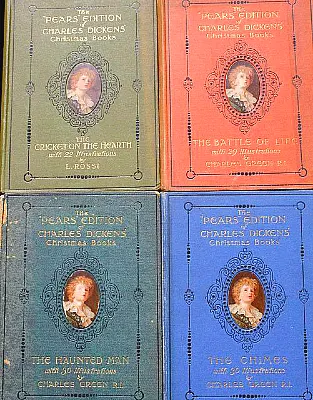
Pears editions. Photo by Daniel Albany. Pixabay.
List of Dickens's Life's Work
Novels Title Year The Pickwick Papers 1836 Oliver Twist 1837 Nicholas Nickleby 1838 The Old Curiosity Shop 1840 Barnaby Rudge (Historical novel) 1841 Martin Chuzzlewit 1843 Dombey and Son 1846 David Copperfield 1849 Bleak House 1852 Hard Times 1854 Little Dorrit 1855 A Tale of Two Cities (Historical novel) 1859 Great Expectations 1860 Our Mutual Friend 1864 The Mystery of Edwin Drood (Unpublished and unfinished) 1870 Novellas Title Year A Christmas Carol 1843 The Chimes 1844 The Cricket on the Hearth 1845 The Battle of Life 1846 The Haunted Man and the Ghost's Bargain 1848 A Child's History of England 1851 - 1854 No Thoroughfare 1867 (Co-authored with Wilkie Collins) Short Stories Title Year The Lamplighter 1838 A Child's Dream of a Star 1850 Captain Murderer 1850 To be Read at Dusk 1852 The Long Voyage 1853 Prince Bull 1855 Thousand and One Humbugs 1855 Hunted Down 1859 The Signal-Man 1866 George Silverman's Explanation 1868 Holiday Romance 1868
The Master of Serialization
The fame of Charles Dickens soared with the publication of his debut novel, "The Pickwick Papers," in 1836. Written in a humorous and satirical style, it quickly established him as a popular author. Dickens continued to produce a string of iconic works, including "Oliver Twist," "David Copperfield," "Great Expectations," and "A Tale of Two Cities."
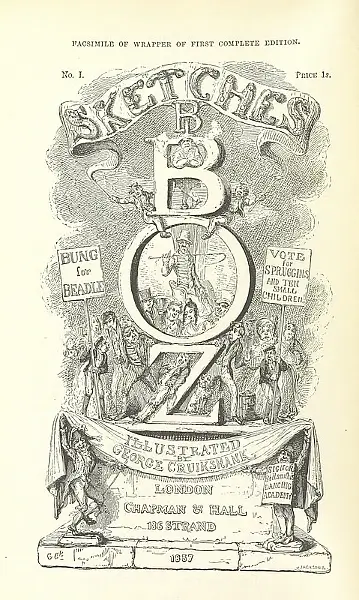
Sketches by Boz, from The Letters of Charles Dickens. British Library. Flickr. Pioneering Serialized Novels One of his pioneering approaches was publishing his novels in serial form. This method enabled a diverse readership to engage with his stories, captivating a broad spectrum of society. His narratives often portrayed the struggles of the working class, the harsh realities of child labor, and the stark truths of Victorian society.
A Writer with a Social Conscience
Charles Dickens was not merely a literary genius; he was a fervent advocate for social reform. He leveraged his writing to shine a light on the harsh conditions faced by the impoverished and marginalized. Dickens' powerful narratives played a pivotal role in raising awareness about societal injustices and contributed to significant reforms in education, labor, and child welfare. Beyond the Pen - Philanthropic Endeavors Dickens went beyond his role as an author by founding Urania House, a home for women seeking to escape prostitution. He was an active campaigner for social change, believing in the transformative power of literature in addressing societal concerns.
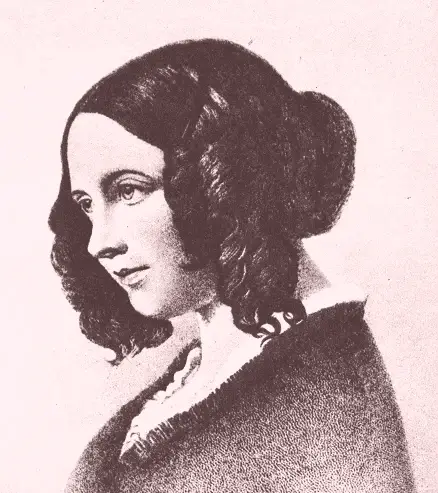
Catherine Hogarth, wife of Charles Dickens. Photo by Edwin Roffe. Wikimedia.
The Complex Personal Landscape of Charles Dickens
In his personal life, Dickens grappled with numerous challenges. He married Catherine Hogarth in 1836, and the couple had ten children. However, their marriage ended in separation, and the emotional toll of this period is reflected in his writings, particularly in his novel "Bleak House." The Man Who Loved Animals A lesser-known aspect of Dickens' life was his profound love for animals. He had pets like Grip, a raven who inspired the character of Barnaby Rudge, and a cherished cat named Bob, whose claw served as his favorite letter opener.
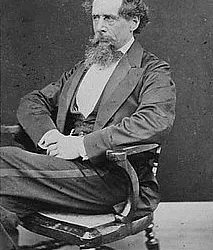
Photo by Mason & Co. Source: Penn State Special Collections Library. 12th Sept. 2022.
The Timeless Appeal of Dickens' Work
Charles Dickens' works remain as relevant and beloved today as they were in his time. His ability to capture the essence of human nature and portray the stark realities of his era continues to resonate with readers of all generations. Characters like Ebenezer Scrooge and Pip have become cultural icons, and his storytelling techniques have had a profound impact on the evolution of the novel.
Conclusion: A Literary Luminary for the Ages
In conclusion, Charles Dickens was not only a prolific author but also a compassionate advocate for societal transformation. His novels provide a window into the complexities of Victorian society, and his legacy endures through his timeless characters and storytelling. Dickens was not just a writer; he was a champion of social reform, and his words continue to inspire and educate generations. The man who liked to call himself "The Sparkler of Albion" remains a brilliant and enduring figure in the world of literature. Charles Dickens is an author whose brilliance will never dim. Throughout his lifetime, Charles Dickens penned some of literature's most beloved classics while also shining a light on the realities faced by many during the Victorian era. He died in 1870, but his legacy continues through his timeless works of literature. Sources: THX News, Wikipedia & Socialism Today. Read the full article
#ATaleofTwoCities#CharlesDickens#CharlesDickensbiography#CharlesDickens'enduringinfluence#CharlesDickens'famousnovels#CharlesDickens'personallife#Dickens'literarylegacy#Dickens'philanthropiccontributions#Dickens'socialactivism#ThePickwickPapers#VictoriansocietyinDickens'time
0 notes
Text
Found one!

"The caricatures purport to express a humorous approach to relations between Western and Eastern figures, with this cartoon depicting “Sultan Feisal I (of Egypt)” with a young lady in Western dress. The title references the eighteenth-century satirical artist William Hogarth’s series “The Rake’s Progress”, although the note “Hogarth’s Dream” may also suggest a link to David George Hogarth." - source
Ooooh sykes how I hate you
While reading The Seven Pillars of Wisdom, I came across a description of Mark Sykes who, I then remembered, made this caricature


But now I'm intrigued; has he made anymore drawings such as this one? I've been trying to find anything, though hopefull I'd find something with TE depicted, he might've also drawn but turned up with nothing. Help needed 🙏
20 notes
·
View notes
Text
LAWRENCE DE ARABIA
EL EJEMPLO PERFECTO DE AVENTURERO Thomas Edward Lawrence-LAWRENCE DE ARABIA. Arqueólogo, escritor y militar, conocido por su notable papel de enlace durante la I Guerra Mundial, en la revuelta árabe contra el dominio otomano. Como vamos a ver, acumuló sobrados motivos para convertirse en leyenda. (more…)
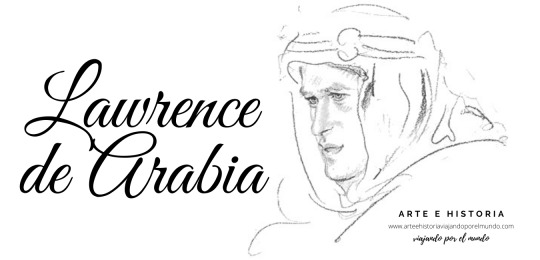
View On WordPress
#CARCHEMISH#CHURCHILL#DAVID GEORGE HOGARTH#FAISAL I#GERTRUDE BELL#GRANDES VIAJEROS#I GUERRA MUNDIAL#IMPERIO OTOMANO#LAWRENCE DE ARABIA#LEONARD WOOLLEY
0 notes
Photo
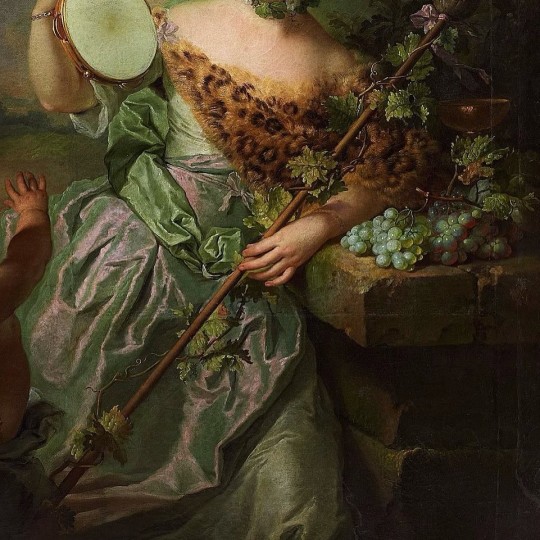
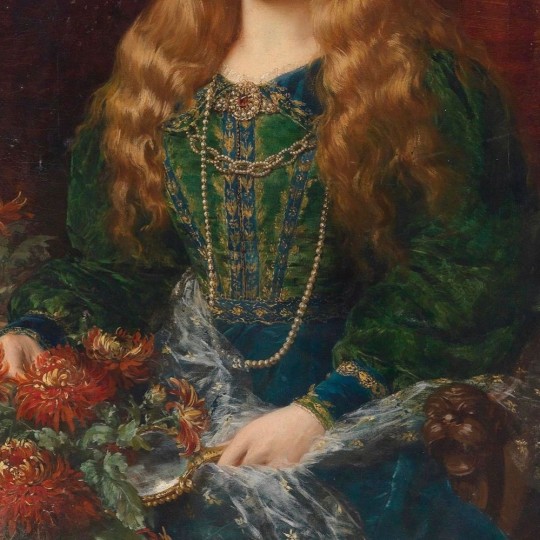
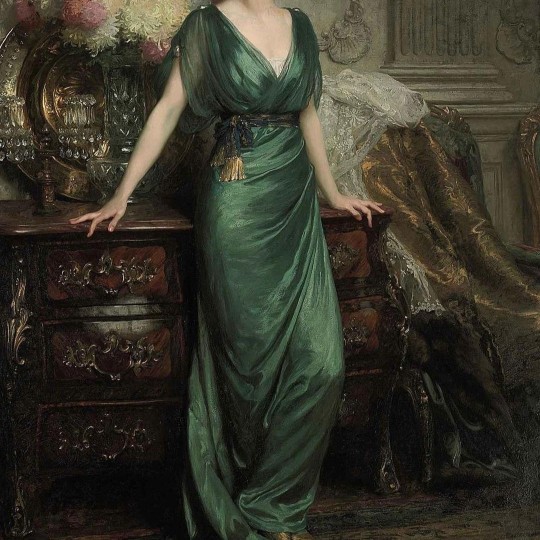
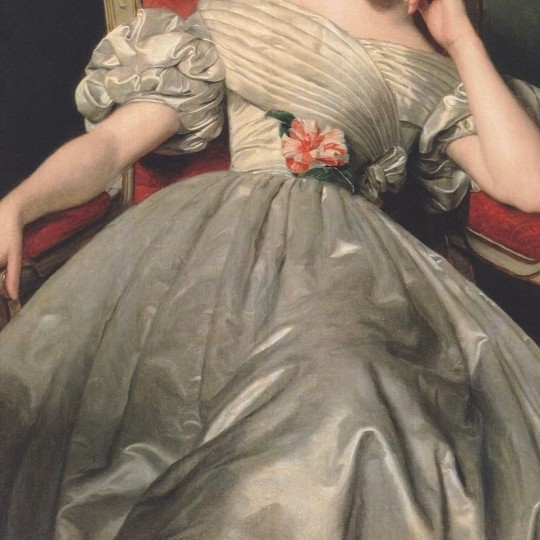

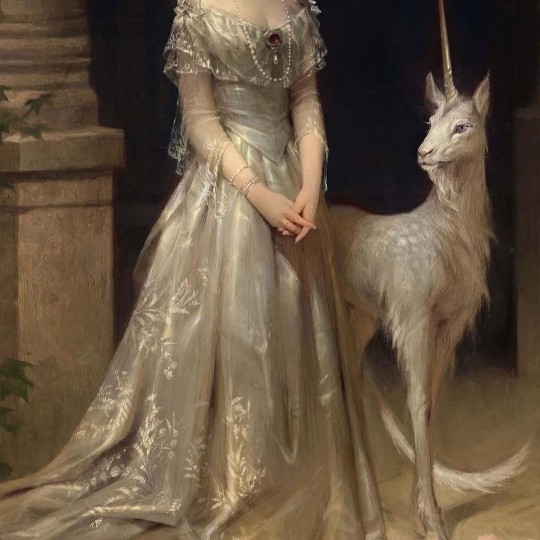
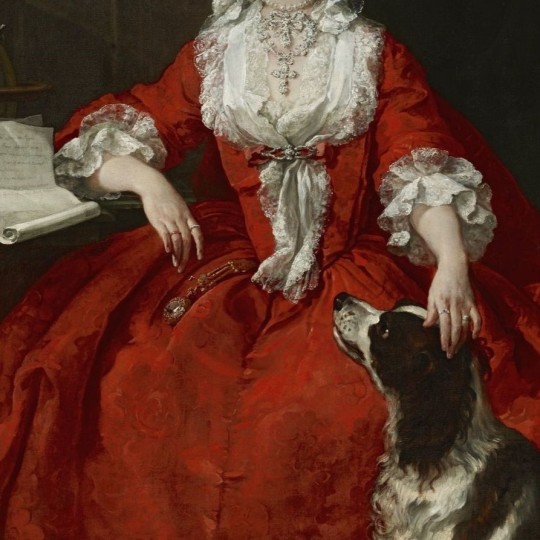

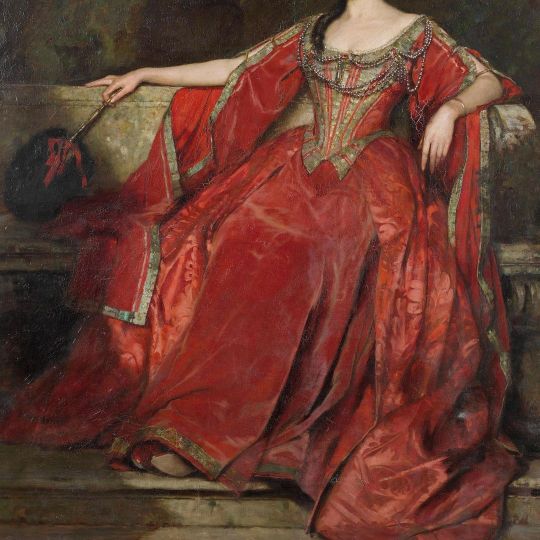
Georg David Matthieu,1760 / Ignace Spiridon - / Frank Bernard Dicksee,1912 / Ferdinand Georg Waldmüller, 1839 / Betty Jiang, 2020 / William Hogarth,1742 / Nicolas de Largillièrre, 1725-1730 / William Logsdail, 1907
#georg david matthieu#ignace spiridon#frank bernard dicksee#ferdinand georg waldmüller#betty jiang#william hogarth#nicolas de largillièrre#william logsdail
92 notes
·
View notes
Text
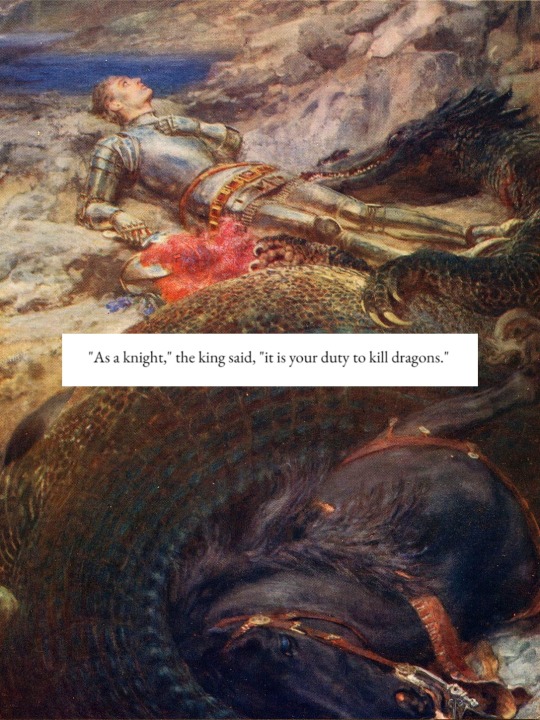
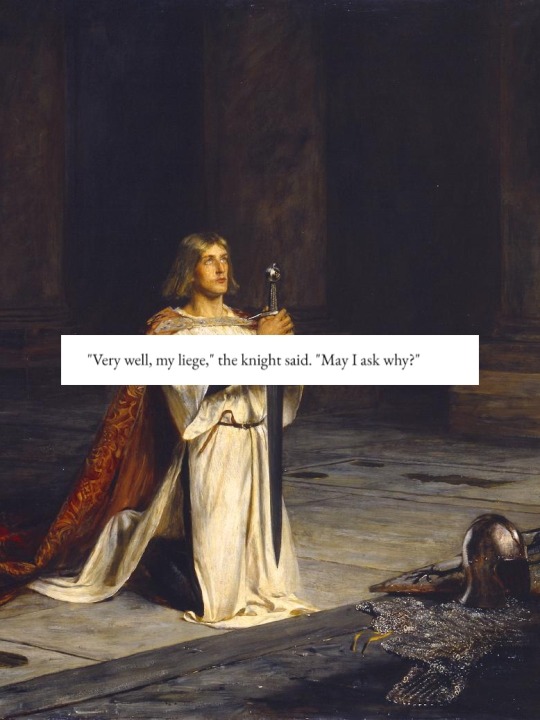

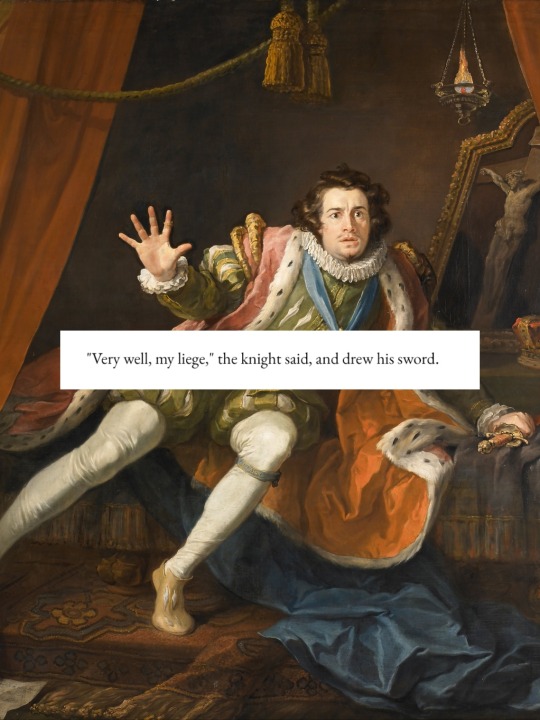
st. george and the dragon (1908-9) - briton rivière / the vigil (1884) - john pettie / vanitas still-life (1705) - evert collier / david garrick as richard iii (1745) - william hogarth / micro sff stories tweet
#len's edits#fantasy edits#history edits#dragons#kings#knights#richard iii#micro fiction#fantasy#fantasy stories#i simply HAD to make an edit for one of my fave tweets!#actually really proud of this one :^)#art#web weaving#parallels
90K notes
·
View notes
Text

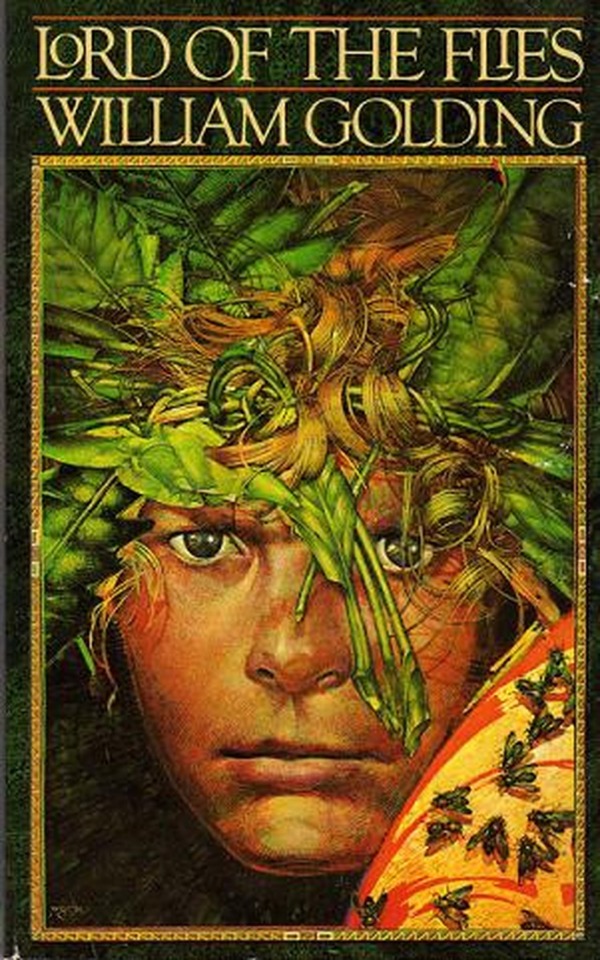
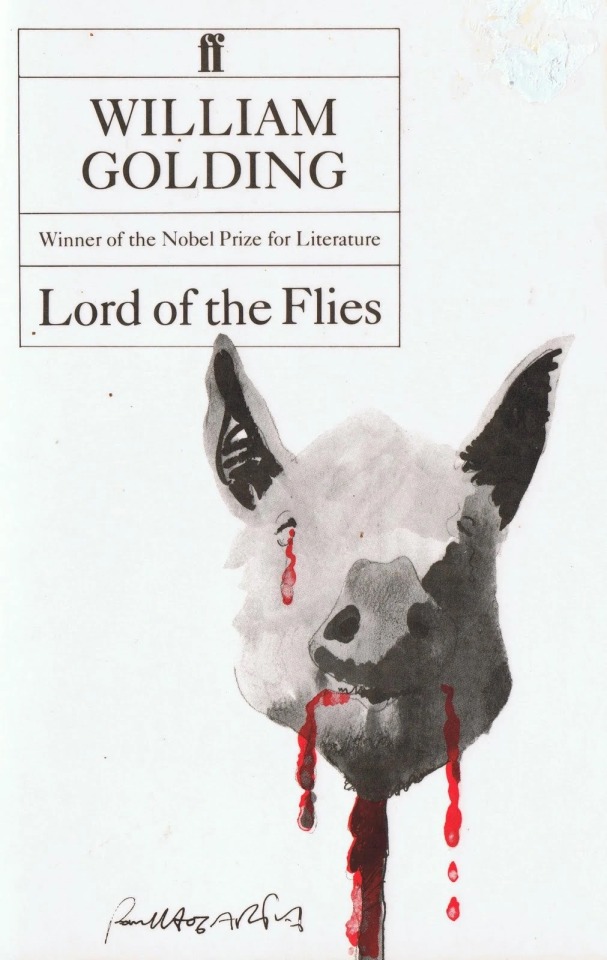
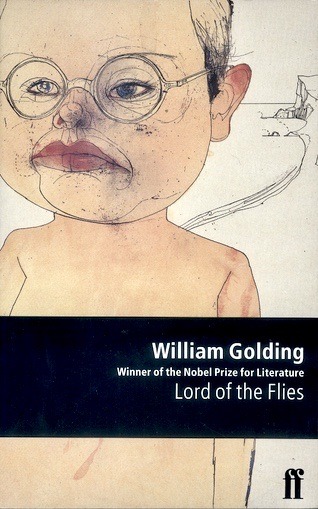
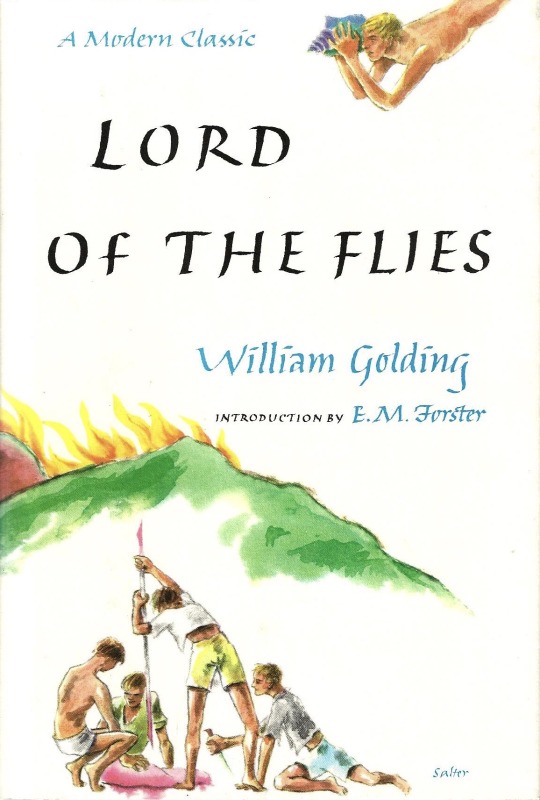

LORD OF THE FLIES covers.
The first one, the cover of the 1954 first edition, is by Anthony Gross. Then the 1980 cover by Barron Storey. The 1990 edition, next, is the one I remember best; I read it in high school, and it was the first (non-children’s) book I actually enjoyed reading, along with CATCHER IN THE RYE. The cover is by Paul Hogarth. Then the 1993 cover by David Hughes. I’ve featured George Salter’s covers before—his cover illustration, image 5, is from 1962. Lastly, the 1960 Penguin edition, also by Anthony Gross.
705 notes
·
View notes
Text
Who's Who of Seven Pillars of Wisdom and the Arab Revolt
TE Lawrence - British archaeologist, later spy, soldier, and diplomat. Lawrence was the illegitimate son of an Anglo-Irish lord and a governess in his household. Lawrence completed a 1,000 mile walking tour of crusade castles in Syria for his Oxford history thesis and later did field work under the famous archaeologist David Hogarth. His fluency in Arabic, as well as knowledge of local history, customs, and geography, suited him to assignment to advise the Arab Revolt.
Lawrence argued vehemently for Britain and France to uphold their promise of a united, self-ruling, pan-Arabic state after the war, and against the Sykes-Picot Agreement that divided the region into European mandate states. How much Lawrence knew of the planned betrayal of the Arab allies during the Revolt is open to debate, but he continued to advocate for Arab voices and self-rule. At the Paris Peace Conference, Lawrence made a point to dress in Arab clothing, associate primarily with the Arab delegation, and demonstrate his support.
After the war, Lawrence suffered mentally and emotionally. In addition to the general horrors of war, he had possibly been captured, tortured, and sexually assaulted. (Historicity of this is debated.) His personal guarantees had been broken by his government.
He re-enlisted in the Royal Air Force as an aircraftman (the lowest rank), after having retired from the army as a colonel (a high ranking officer), under a fake name - John Hume Ross. When his true identity was discovered, he left, despite an offer to allow him to remain. He changed his name more officially to TE Shaw (from his friendship with playwright George Bernard Shaw), and enlisted in the Royal Tank Corps, again as a private, the lowest rank. Unhappy, he returned to the RAF again, under the name Shaw and fully above-board, where he remained for five years.
Lawrence finally left the RAF in 1935 and died in a motorcycle accident about two months later, swerving to avoid some bicyclists.
5'5" (166 cm) tall and wiry. Tiny!
Spoke Arabic, French, Greek, and Latin. Published his own translation of The Odyssey, his dissertation study of crusader castles, several memoirs, and many poems. Lots of poems.
Carried a copy of Sir Thomas Malory's Le Morte d'Arthur in his pocket everywhere during the war.
Likely homoromantic asexual. Did not like being touched by anyone. Showed no sexual or romantic desire toward women, but strong admiration for male bodies and intimacy. This is all further complicated by the possible sexual assault, his possible kinkiness, and the post-war whippings that he paid an army buddy to regularly administer. (Don't worry, we'll get into all this eventually.)
Really loved motorcycles and bicycles.
A real wells-for-boys kind of guy.
Sherif Hussein bin Ali al-Hashimi - Sherif and Emir of Mecca, 37th generation direct descendent of Mohammed, credited with officially forming and declaring the Arab Revolt, later King of Hejaz (western Arabian Peninsula). His communication with Henry McMahon (below), the McMahon-Hussein Correspondence, established the alliance between Britain and the Revolt. Sherif Ali attempted to establish a pan-Arabic state after the war. His three sons led the efforts of the revolt and the diplomatic endeavors. His descendants, the Hashemite family, rule Jordan to this day.
Prince Faisal (Feisal) bin Hussein- A guy to watch! Our man! Third son of Sherif Hussein, head of the main northern force of the Revolt, and later king of Syria and Iraq. Became a friend of Lawrence's and requested his permanent assignment with the Revolt. Critics of Lawrence say that some actions and ideas Lawrence took credit for may have been Faisal's instead. Leader of the Arab delegation to the Paris Peace Conference.
(Mod Whit note: A biography of Faisal recently came out by Ali Allawi, Iraq's current Deputy Prime Minister. Very excited to read and include points here!)
Prince Ali bin Hussein - First son of Sherif Hussein. Later King of Hejaz after his father.
Prince Abdullah bin Hussein - Second son of Sherif Hussein. Later King of Transjordan. Commanded the next-largest, eastern portion of the Arab army.
Prince Zeid bin Hussein - Fourth son of Sherif Hussein. Led the forces that cut off Ottoman reinforcements from Medina to Rabigh. Later, served in the government under his brother Faisal's rule in Iraq, until the overthrow of the royal family.
Henry McMahon - British High Commissioner in Egypt when the Arab Revolt started. His initial promise lie to Sherif Hussein of supporting an Arab state led to the cooperation.
SF Newcombe - The British officer originally assigned to be liaison with the Revolt. He was late arriving and Lawrence was sent to fill in. When Newcombe finally arrived, Faisal had become close to Lawrence and asked for Lawrence to remain in his position. Newcombe remained involved and a friend of Lawrence's for life.
Lord Kitchener - British High Commander during World War I. Famous for the 'stache. A full-on war criminal of the lowest order. Put Boer civilians in concentration camps during the Second Boer War in Africa years earlier, among other atrocities.
Mark Sykes - Co-authored the Sykes-Picot Agreement, a semi-secret arrangement between Britain and France to divide up the Middle East into colonial mandate states after the war. Lawrence thinks he's an ass-hat and takes the opportunity to call him incompetent and bad. (Very hard to overstate how bad this was. This agreement is a factor in virtually all of the conflicts and difficulties in the Middle East for the next 100 years and counting.)
Sherif Abd el Kerim - Lawrence's assigned guide for an early portion of his assignment.
Sherif Sharraf bin Rajeh - Emir of Taif, early Arab fighter against the Ottomans, commander under Faisal.
General Fakhri Pashi (Pasha) - Ottoman commander of the forces in Medina.
Colonel Bremond - Chief of the French Military Mission in Arabia.
Sheikh Auda Abu Tayi - Close companion of Lawrence's throughout the campaign, one of the main leaders of the Battle of Aqaba.
Auda ibn Zaal - Abu Tayi's cousin. A formidable fighter and raider in the Revolt.
Prince Sherif Jamil bin Nasir - Nephew of Sherif Hussein and another close companion of Lawrence's.
Emir Nuri Shaalan - Emir of the Ruwalla tribe of the Beduins. Lawrence calls him the fourth most import leader of peoples in the desert.
(FYI, Lawrence's name spellings are often his transliteration from Arabic, not the agreed English spelling. I will probably bounce back and forth, sorry. This post to be updated, added to, and reblogged as the book progresses. Subscribe here to follow along on the substack!)
22 notes
·
View notes
Text
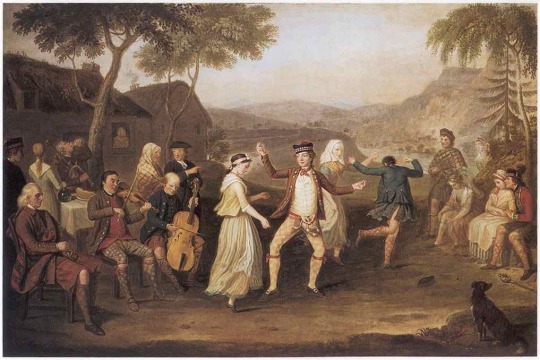
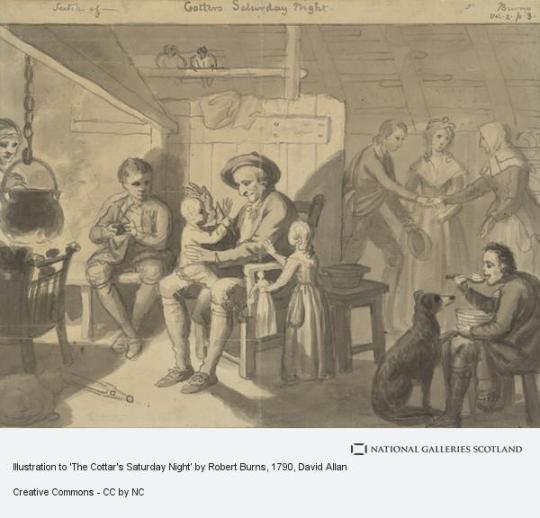
On August 6th 1796 Scottish artist, David Allan, died.
David Allan was born in 1744 in Alloa, Scotland, and earned himself the nickname Hogarth of Scotland.His studies began at the Glasgow Academy, where he was taught by the printers Robert and Andrew Fonlis. At the age of twenty, he travelled south to Italy and continued his education at the Academy of St. Luc in Rome.
Having spent almost fourteen years in Italy, where he painted landscapes in the style of Poussin, he moved to London in 1777 and established himself in London as a portrait painter. In 1780 he moved permanently to Edinburgh, where he was made master of the Academy six years later.Many of his portraits can be found today in museums in London and Edinburgh and a self-portrait of Allen hangs in the Scottish National Gallery."
Some of Allan's best work is Scottish themed, like Highland Wedding, he also collaborated with Rabbie Burns, through his publisher George Thomson, his oval prints went down well with the poet who was to comment that he was:
"highly delighted with Mr Allan’s etchings […] The expression of the figures conformidable to the story in the ballad is absolutely faultless perfection."
Although the two never met correspondence between the three involved with the artwork tells of an admiration between the poet and the artist.
Burns died on 21st July, and was closely followed by Allan, on 6th August 1796.
Allan is buried in the Old Calton Cemetery, Edinburgh, not far from the grave of David Hume. By his wife, Shirley Welsh, herself a keen art student, and a great admirer of her husband's work, he had five children only one of whom, Barbara, reached adult life.
7 notes
·
View notes
Text
Birthdays 5.14
Beer Birthdays
Dan Carey (1960)
John Martin (1960)
Mark Cabrera (1964)
Bryan Simpson (1967)
Brian Stechschulte (1977)
Five Favorite Birthdays
Sidney Bechet; jazz saxophonist (1897)
Bobby Darin; singer (1936)
Thomas Gainsborough; English artist (1727)
George Lucas; film director (1944)
Robert Zemeckis; film director (1951)
Famous Birthdays
Archie Alexander; African-American mathematician (1888)
Sophie Anderton; model, actor (1977)
Francesca Annis; English actress (1945)
Diane Arbus; photographer (1923)
Pierre Victor Auger; French physicist (1899)
Jay Beckenstein; jazz saxophonist (1951)
Antonio Berni; Argentinian artist (1905)
Kate Blanchett; actor (1969)
Hal Borland; journalist (1900)
Jack Bruce; rock bassist (1943)
David Byrne; rock musician (1952)
Al Ciner; pop-rock guitarist (1947)
Anne Clark; English singer-songwriter and poet (1960)
Tom Cochrane; Canadian singer-songwriter (1953)
Eoin Colfer; Irish author (1965)
Earle Combs; baseball player (1899)
Sophia Coppola; film director (1971)
Miranda Cosgrove; actor, singer (1993)
Richard Deacon; actor (1922)
C.C. DeVille; rock guitarist (1962)
Billie Dove; actress (1903)
William Emerson; English mathematician (1701)
Richard Estes; artist (1932)
Gabriel Daniel Fahrenheit; German inventor (1686)
Alfredo Gobbi; Argentine tango musicians and composer (1912)
Robert Greene; author (1959)
Rob Gronkowski; football player (1989)
Roy Halladay; Toronto Blue Jays/Philadelphia Phillies P (1977)
Heloise; helpful hints columnist (1919)
Steve Hogarth; English singer-songwriter (1956)
Peder Horrebow; Danish astronomer (1679)
Danny Huston; Italian-American actor (1962)
Mike Inez; American rock bassist (1966)
Dub Jones; R&B bass singer (1928)
Alexander Kaufmann; German poet (1817)
Otto Klemperer; orchestra conductor (1885)
Nicholas Kurti; coined term “molecular gastronomy” (1908)
Rudolf Lipschitz; German mathematician (1832)
Norman Luboff; choir director (1917)
Skip Martin; bandleader, composer (1916)
Clay Matthews III; Green Bay Packers football player (1986)
Henry McGee; English actor (1929)
Wim Mertens; Belgian composer (1952)
Tony Pérez; Cuban-American baseball player (1942)
Al Porcino; jazz trumpeter (1925)
Walter Rehberg; Swiss pianist and composer (1900)
Tim Roth; actor (1961)
Amber Tamblyn; actor (1983)
Thomas Wedgwood; English photographer (1771)
Mark Zuckerberg; Facebook founder (1984)
1 note
·
View note
Text
Outlander and the Real-World Mystery of What British Uniforms Looked Like in 1745
As folks can’t help but have noticed, I’ve been treating the TV series Outlander to all sorts of unpleasantness recently, but one of the most popular topics for historical pedants everywhere - namely uniformology - has raised interesting points that actually go beyond mere nitpicking with the show. The interesting, and frustrating, thing is we don’t actually have good evidence for just what British Army uniforms looked like during the 1745 Jacobite Uprising.
The basis of our knowledge for British uniforms in the 1740s is a text called the Cloathing Book. Officially commissioned in 1742 by the Duke of Cumberland for his father King George II, it shows the uniforms as worn by regular soldiers across the British Army, from line regiments to cavalry to “invalid” veterans. It gives us a pretty sound foundation for what soldiers probably looked like during the Jacobite Rising which did, after all, only occur three years later. But three years is a long time in the world of fashion.
The next quasi-official mass artistic rendering of what British soldiers were wearing occurred around 1751, when artist David Morier was commissioned to paint a grenadier from each regiment in the British Army, possibly for the Duke of Cumberland. The result shows us the changes that had occurred between 1742 and 1751, such as more elaborately laced, but less baggy cuffs, and waist belts being worn beneath coats rather than over them - elements that all mirrored the progress of popular fashion at the time.

Take the images below showing the same regiment, the 4th Foot or King’s Own, as depicted in 1742 and 1751. Leaving out the fact that one is a regular soldier and one is a grenadier (and thus has a different hat and shoulder lace), and the changes to aspects like the cuffs, skirts and general cut are fairly obvious.
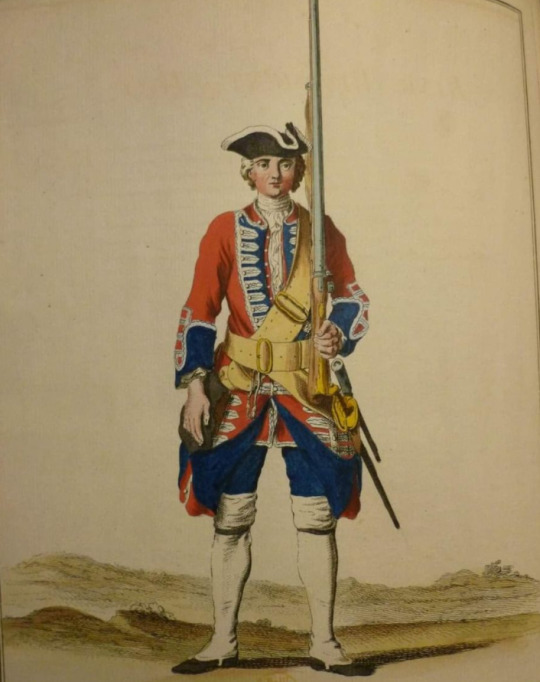
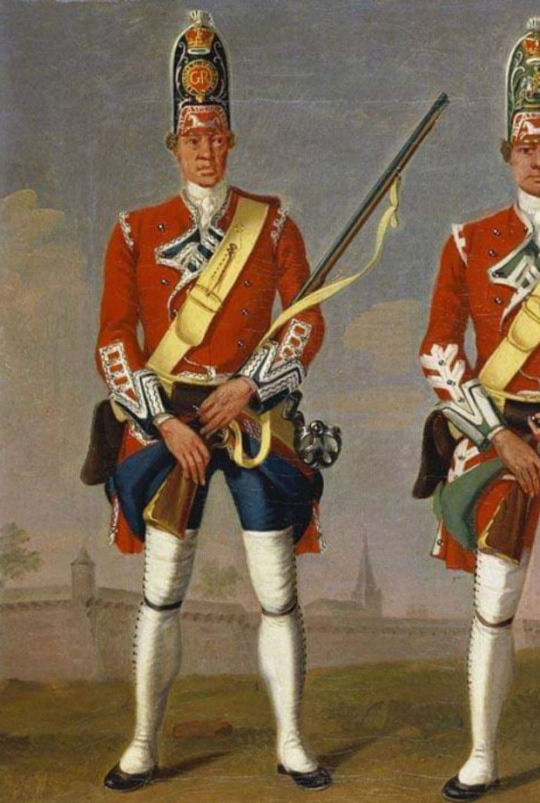
But where does this leave us for 1745? Just how far along the path between 1742 and 1751 had uniforms progressed? Surely there must be more artwork depicting soldiers from those years?
The initial answer might seem to be “yes.” What about Hogarth’s famous work The March of the Guards to Finchley, depicting British soldiers marching to meet the Jacobites, or David Morier’s actual depiction of the battle of Culloden? Or, if seeking a less formal sketch, what of the charming depictions by Paul and Thomas Sandby, British Army cartographers who spent their spare time documenting Scotland’s landscapes and peoples in the aftermath of the uprising. Those are all near-as-damnit contemporary, right?
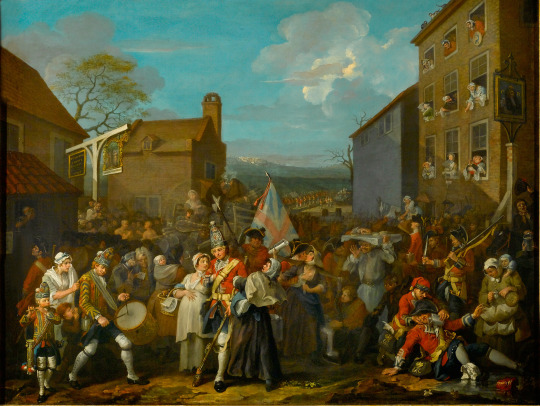
Well, actually, not really. Exact dates are almost impossible to pin down for any of these pieces. The famed (and excellent) Hogarth painting of the Guards was done in 1750. Sandby’s sketches (one below) are largely undated, but are believed to mostly fall around 1748 and 49. Bearing in mind that new uniforms were issued every year and the problem becomes clear.

And what of Morier? His artwork is popularly believed to show the 4th Foot engaging the Jacobites at Culloden. But if it’s meant to show the 4th, who we’ve seen above in 1742 and 1751, then it shows some curious variance. The cuffs are different shapes, the lapels narrower and the sleeves have a herringbone lace pattern, rather than the ladder pattern seen in ‘42 and ‘51. There’s also no lace on the skirts except, tantalisingly, in one case where the artist appears to have started to paint it in then stopped. Historian Stuart Reid hypothesizes that this points to the “Culloden” painting actually being done by Morier in the 1750s, a fact supported by the popular belief that he had members of the 4th stand in as real studies at his London studio - the 4th weren’t stationed in London until the 1750s.
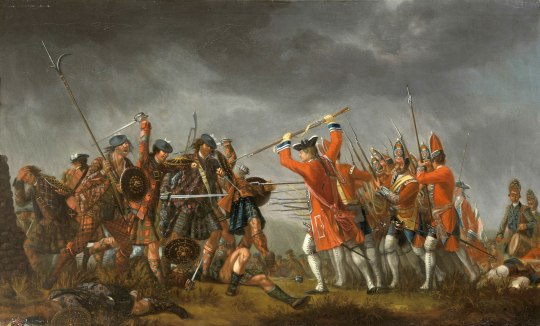
In fact, the painting is probably not meant to be a direct depiction of Culloden at all. It is popularly known only as An Incident in the Rebellion of ‘45, and the first time it appears on record, in 1765, it is described simply as A Skirmish between some Highlanders and English Infantry.
As a final frustration, we cannot guarantee that the Cloathing Book itself is wholly accurate. A number of regiments are clearly based on the same standard template image, and we don’t know whether this was an artist cutting corners, or whether they were genuinely identical. We do have written evidence of uniform changes between 1742 and 1745, such as the instruction issued on November 17 1743 that ‘all the coats of the infantry be lappeled that are not so already, and that all be made with the same sort of pocket as the Scotch Fusiliers, viz., the plaits of the coat.’ This essentially removed the last of the old-style single-breasted jackets, such as those seen worn by the 20th Foot in 1742. Such documented evidence is few and far between, however.
What conclusions can we draw from all this? Well, basically, we don’t know exactly what uniforms looked like in 1745. Close, yes, but no guarantees. So let’s bring Outlander back in to make ourselves all feel better.


Obviously these lads are a mess, but just where have they gone wrong? It looks to me as though the costume designer has decided to base all his or her redcoats on the depiction of Ligonier’s 59th Foot from the 1742 Cloathing Book (image below). The most distinct thing about them is the lack of lace around the buttons, something considered by some to be evidence of another mistake in the 1742 book and something that, even if it were reality, probably still wouldn’t have been the case in 1745.

The baggy cuffs, incorrect button placement and poor cut of the garments (regimental tailors actually fitted each soldier’s coat to him during the period) are a bad start, as are the baggy gaiters and mismatching shoes, but things keep going south as we move onto the accouterments and weapons. The belts are certainly not the buff leather they ought to be and the cartridge pouches are likely too small and shouldn’t be that shade. No soldiers in the show appear to carry water canteens. Some of the muskets look suspiciously like later Short Land Pattern models. And the hats are best left unmentioned - ugly, poorly shaped, without lace, they look like they’ve come from a kid’s pirate Halloween costume.
Am I being harsh? Possible. It is, after all, a TV show, not a documentary (and it’s not like they often get it right either). Never-the-less, the information for making good, educated guesses is out there. I’m not saying we should see a whole battalion of British infantry in tailored, hand-stitched uniforms. But implementing some better research would have yielded a better look without necessarily hitting the budget any harder. On the bright side, at least it gives history nerds something to complain about.
#outlander#history#scottish history#british army#18th century#redcoat#redcoats#fashion#military history#scotland#scottish#jacobite#jacobites#the 45#1745#culloden#battle of Culloden
91 notes
·
View notes